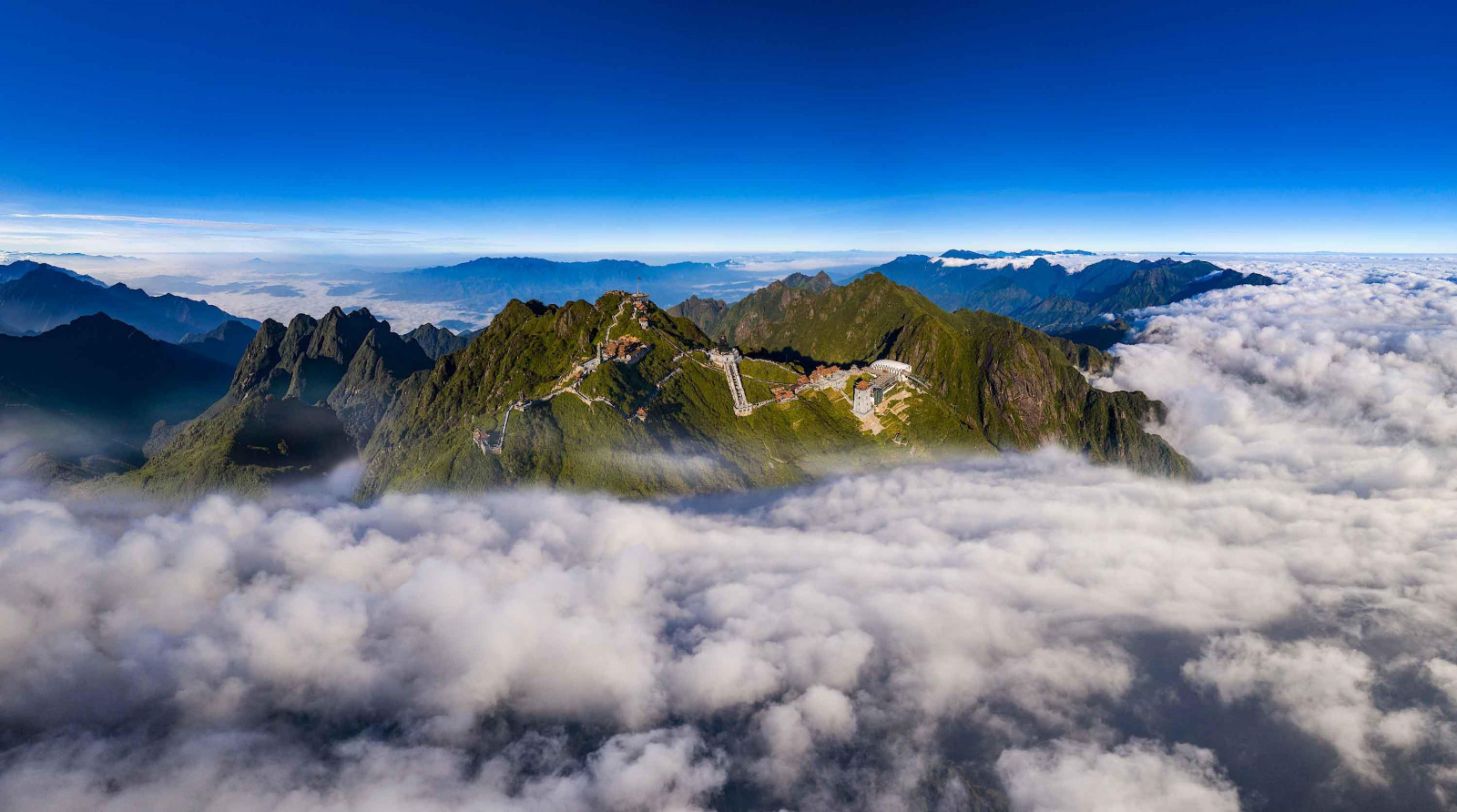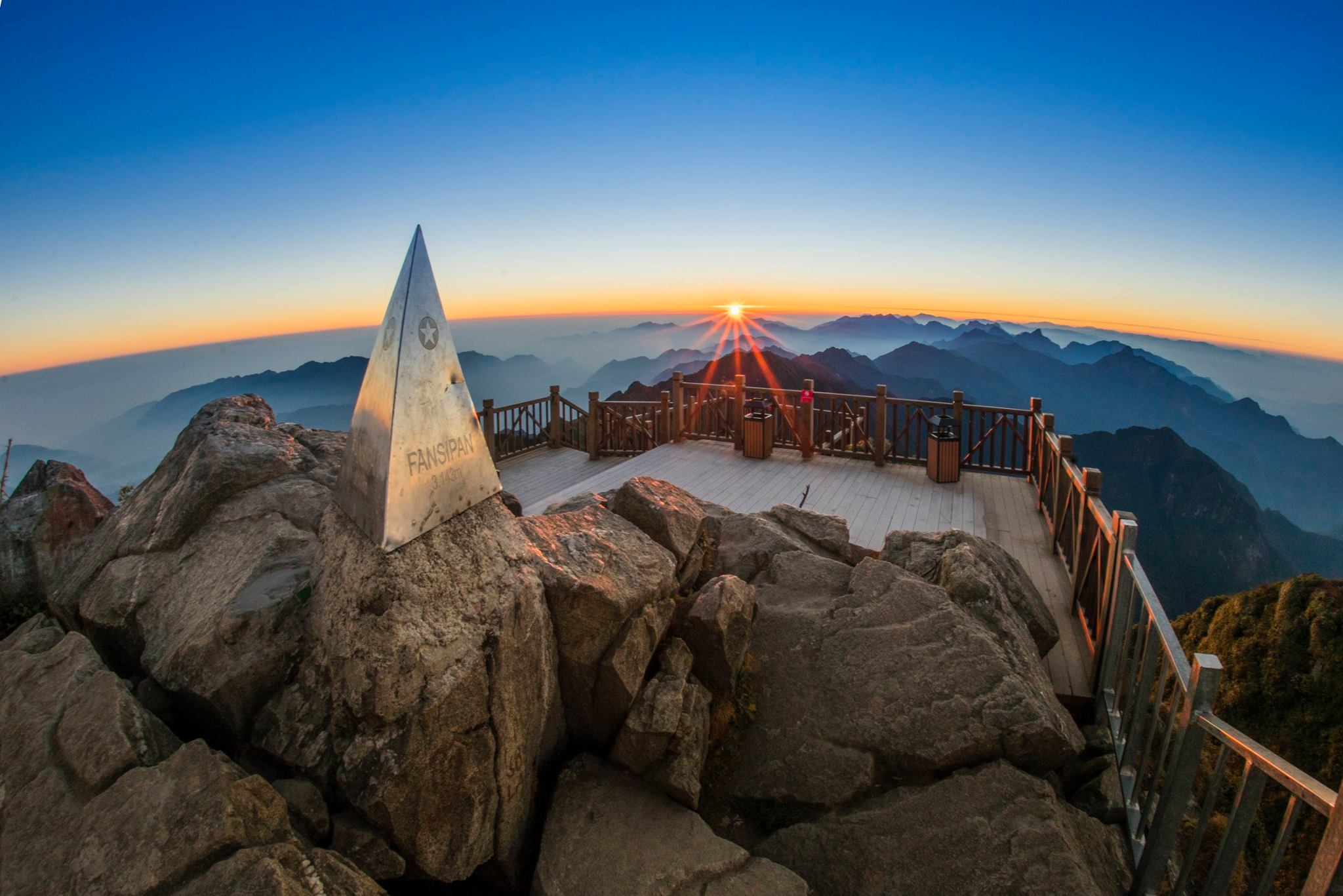Fansipan Mount is the highest mountain in Vietnam - The Roof of Indochina at 3,143 metres (10,312 ft). It is located in Hoang Lien Son mountain range and about 9 km far from Sa Pa Town to the Southwest. The mount is the border of two provinces Lao Cai and Lai Chau in the Northwest of Vietnam. According to the local language, people call the mount “Hủa Xi Pan” which means a giant precarious Flagstone.

Fansipan Mount in the cloud
Fansipan mount is a promising destination of many mountaineers. In order to conquer the mount you may need the help from some professional tour operators or you may have to require the guide of the local people. The departure of the 333km train journey can be Hanoi and the arrival is Lao Cai province, after that, from Lao Cai tourists will take a company bus of about 38 km to Sapa, then from Sapa you can go to the top of Tram Ton Pass or a less popular tourist area Cat Cat by car or “xe om”. There’s a largest number of Mong and Dao ethnic people working as a porters serving mountain climbers here.
It took about 5 or 6 days to travel from Sapa to Fansipan many years ago, however, it takes only 3 days or even 2 days for the tour now and for those who are conversant and healthy even take less time to complete the trip with only one day.

Fansipan Mount
The most common journey that tourists visiting Sapa are offered is three-day tour. In the morning of the first day tourists will travel by car from Sapa to the ranger station on Tram Ton Pass and starting the journey there. When passing the mountain range climbers reach the height of 1.900m with a spring nearby. Tourists expect to build their camp, cook and eat then stay overnight here. For the second day, from the resting place, tourists will climb to the peak of the mount at the height of 3.143m and have lunch on the top, which is considered the most challenged part of the journey.
After that, tourists go back to their camp at the resting place for the second night. The next day, from the camping location they travel back to Sapa on a different path. There will be a company bus waiting at the bottom of the mountain to pick up and take tourists to Sapa. A regulation for climbers is not to through rubbish in the forest but to bring along and then burn them.
The favorable moment for climbing is from September this year to March of the next year. However, the most beautiful scene to contemplate is at the end of February, starting of the blooming season.